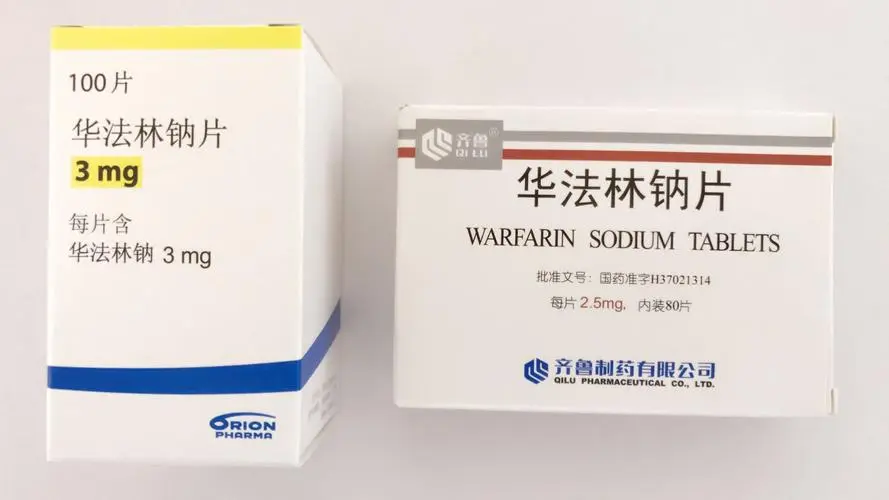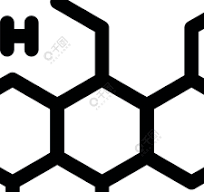Warfarin
Function:
It is mainly used to prevent and treat thromboembolic diseases. It can prevent the formation and development of thrombosis, such as treating thromboembolic phlebitis, reducing the incidence and mortality of pulmonary embolism, reducing major surgical operations, rheumatic heart disease, hip arthrodesis, artificial The incidence of venous thrombosis in heart valve replacement surgery and other auxiliary drugs for the treatment of myocardial infarction.
Dosage:
The dosage required for anticoagulant treatment with warfarin has different requirements according to different diseases. The INR (International Normalized Ratio) should be measured regularly and the daily dosage should be dynamically adjusted. Please follow your doctor’s advice for details. The target INR range for oral anticoagulation therapy: for patients with artificial heart valves to prevent thromboembolic complications, the INR is 2.5-3.5; for other indications, the INR is 2.0-3.0. Adult patients with normal weight and those with natural INR lower than 1.2 should be treated with 10 mg warfarin sodium within the first 3 days. Continue treatment at the dose listed in the table below based on the INR value measured on the 4th day of treatment. Please follow your doctor’s advice for details. For open treatment and patients with hereditary protein C or S protein deficiency, the recommended continuous dose is 5 mg for the first 3 days. Continue treatment according to the patient’s INR value on the 4th day of treatment at the dose listed in the table below. Please follow your doctor’s advice for details. For elderly patients, small body size, natural INR higher than 1.2, or patients with other diseases (see Precautions before Medication for details), or patients who are taking other drugs that may affect the effect of anticoagulation (see Drug Interactions for details), it is recommended to The starting dose is 5 mg on the 2nd day, and treatment is continued at the dose listed in the table below based on the patient’s INR on the 3rd day of treatment. Please follow your doctor’s advice for details. Weekly Warfarin Sodium Dosage Table Note: Monitor INR daily until therapeutic level is reached (usually 5-6 days), and the interval for measuring INR can be extended to once a week. For long-term treatment follow-up, the dose should be adjusted according to the table above. After dose adjustment, the next INR needs to be measured 1-2 weeks after dose adjustment. The decision should be made based on the patient’s compliance rate and clinical status, and the measurement interval can be further extended to reach a 4-week measurement interval. Please consult your doctor for details. If the patient’s INR value fluctuates significantly or is accompanied by diseases that affect liver function, or suffers from diseases that affect the absorption of vitamin K, the INR measurement interval needs to be less than 4 weeks. In addition, many drugs can increase or decrease the effect of warfarin sodium. Patients should monitor INR levels more frequently when they need to add new drugs or cancel current drugs. Pediatric Medication The initiation and follow-up of anticoagulant therapy in children must be carried out by doctors specialized in several disciplines, and the dosage should be adjusted as shown in the table below. Please follow your doctor’s advice for details. For elective surgeries, preoperative, perioperative and postoperative anticoagulant therapy shall be carried out according to the following usage and dosage. Determine INR 1 week before surgery: Stop warfarin sodium 1-5 days before surgery. If the patient is at high risk for thrombosis, therapeutic doses of low molecular weight heparin may be administered through the skin for prophylaxis. The effect of heparin is monitored by measuring activated factor Suspension of warfarin sodium treatment (determined by INR value): if INR>4.0, stop the drug 5 days before surgery; if INR is 3.0-4.0, stop drug 3 days before surgery; if INR is 2.0-3.0, stop 2 days before surgery Discontinue medication. Measure the INR in the evening before surgery. If the INR is >1.8, give oral or intravenous injection of 0.5-1mg vitamin K1; consider giving intravenous unfractionated heparin or prophylactic low molecular weight heparin on the day of surgery; continue subcutaneous injection of low molecular weight heparin 5-7 days after surgery. Molecular weight heparin and concurrent warfarin sodium therapy were restarted. In the evening of the day of minor surgery, warfarin sodium treatment was continued at the normal maintenance dose. After major surgery, the patient began to receive intravenous nutrition and warfarin sodium treatment was continued.
Adverse reactions:
The main adverse reaction is bleeding, the most common of which are epistaxis, gum bleeding, skin ecchymosis, hematuria, uterine bleeding, blood in the stool, bleeding from wounds and ulcers, etc. Occasionally, nausea, vomiting, diarrhea, leukopenia, increased granulocytes, kidney disease, allergic reactions, etc. may occur. Elevations of alanine aminotransferase (ALT), aspartate aminotransferase (AST), alkaline phosphatase, and bilirubin may also occur.
Drug contraindications:
Contraindicated if allergic to this product Contraindicated if liver and kidney dysfunction is prohibited Contraindicated during pregnancy
Share:
Products
Our offers
Health Classification
Let us work together to protect precious health

































